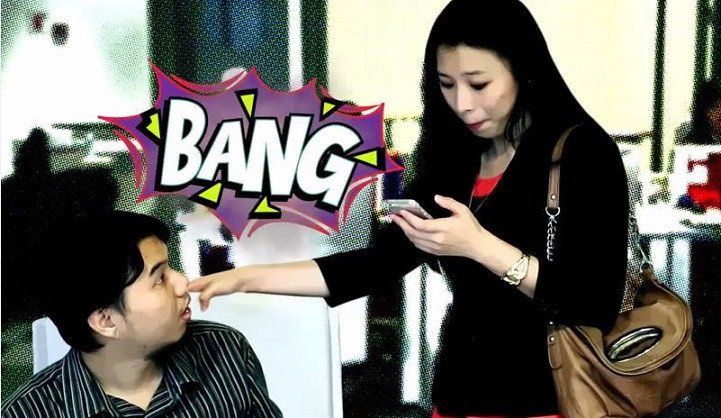In The Face Of Change: Can Bosses Be Irrational?

One of the best opportunities to understand human behaviour is when you work closely with people and are tasked to observe their performance and develop them.
In managing many client projects in the last 20 years, I noted that there are some common irrational behaviours of people when it comes to leading change in organisations.
Hanging on to fears which are not real
One of the reasons people resist change is fear. Many assume the worst of any change initiative in their companies.
A typical case in point is a client organisation, which was converting their information from physical files to digital in an online environment.
Many, especially the older workforce, worried that they could not learn new skills and adapt to the new technology.
This was proven untrue as with training, coaching and encouragement, all of them eventually learnt the new way of working and assimilated the new technology.
In essence, we noted that mindset is more important than skillset.
A study by IBM in 2008 on 1,500 change management executives from 15 countries showed that about 60% of projects fail to meet their objectives.
They pointed out that the major challenge in implementing successful change is changing the mindsets of people.
Change leaders must address concerns and people’s fear towards change. They need to focus on the mindset first before addressing the skillset.
Truly fear is as depicted in the acronym: F.E.A.R (False Evidence Appearing Real).
To implement successful change, leaders must first change the mindsets of people: convince them to let go of the old and fearlessly embrace the new.
Analysis paralysis
In my consulting work, I often run into leaders who love to do analysis. They come up with a complete SWOT (strengths, weaknesses, opportunities and threats) analysis, risk analysis and change assessment impact.
They organise one meeting after another and have people discuss and debate the analysis of findings upon findings.
They take their teams from one retreat to another, each time looking deeper at more findings but discussing the same issues.
Often the conclusion at the retreat was a resolution to come up with more information and analysis needed for their next meeting.
They were infected by this analysis bug to the extent that they became paralysed. The leaders became irrational due to their fixation on analysis and the process of change. They were unable to make critical decisions and move forward with the change.
Effective leadership is not just about knowledge and skills, it is very much about the ability and courage to make decisions and move forward to implement change.
Engaging in unproductive activities
Many leaders pride themselves in setting SMART goals which are specific, measurable, attainable, relevant and time-bound.
In the book Releasing Trapped Minds, I pointed out that one great tragedy in the workplace is that people do not do what they are supposed to do.
Knowing what to do and doing what you know are totally different things altogether.
In fact, one reason why people often fail to meet their work deadlines is that they simply do not focus on the actual work they should be doing.
They engage in unproductive activities such as chatting online, attending to unrelated matters or simply procrastinating.
The key role of leaders here is to get people to focus on activities that will help achieve the goals of the company and hold people accountable for their respective key performance indicators.
Mishandling people
Many leaders are working hard, but things are hardly working when it comes to handling people.
I have personally witnessed corporate leaders who lost their cool and shouted at their staff. These leaders are all too engaged in their tasks that they have not taken time to think about more effective ways to deal with people.
When I was 13 years old, I read a book which had a very positive influence on me. This book How To Win Friends And Influence People by Dale Carnegie had since become a classic on people relations.
I personally believe some of the messages from this book can be the solution to the challenges facing leaders when working with people.
Here are the key points from the book:
- Begin with praise and honest appreciation.
- Call attention to people’s mistakes indirectly.
- Ask questions instead of giving direct orders.
- Let the other person save face.
- Praise the slightest improvement and praise every improvement. Be “hearty in your approbation and lavish in your praise”.
- Give the other person a fine reputation to live up to.
- Use encouragement. Make the fault seem easy to correct.
- Make the other person happy about doing the thing you suggest.
Stop learning and improving
There is a better way to learn and improve and yet it eludes most people. It is by doing new things or doing things in a new way.
It is not uncommon to see many long-serving staff in the workplace (especially if they hold the same position over the years) stop learning and improving altogether. They figure they already know everything there is to know.
Often the best way for such people to learn and improve is to engage them in new tasks or roles which require new knowledge or skills.
The famous painter, Pablo Picasso said it best:
“I am always doing that which I cannot do, in order that I may learn how to do it.”
Not taking charge
It is indeed irrational behaviour, when leaders who want change, stand idly on the sidelines merely suggesting areas for the organisation to change.
Somehow they see it fit to descend themselves to the level of “powerless, helpless and hopeless” state.
Leadership is about taking charge and doing whatever it takes to create positive and productive change. It is not about putting the blame on people but fixing the blame.
In essence, every leader’s creed should be:
“My organisation’s transformation begins with me.”
A leader should begin change from his/her own department or unit in which they have control.
And with each achievement chalked up, his/her department will build up credibility and influence.
With a track record of achievements, he/she can then influence other departments to change for the better too.
In conclusion
It is time leaders stop behaving irrationally and take heed of President Barack Obama’s advice on change:
“Change will not come if we wait for some other person or some other time. We are the ones we’ve been waiting for. We are the change that we seek.”
Dr Victor SL Tan is an international authority on change management and is CEO of KL Strategic Change Consulting Group. He is the author of 10 management books. His latest book is on Lessons Of Success of Tan Sri Teh Hong Piow of Public Bank Bhd. He is also a panel of speaker for Leaderonomics. If you are interested in his courses, email people@leaderonomics.com.
Published in English daily The Star, Malaysia, 31 January 2015
Leadership






